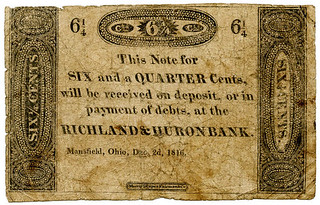
PREV ARTICLE
NEXT ARTICLE
FULL ISSUE
ARTICLE HIGHLIGHTS MANSFIELD, OHIO PAPER MONEYAn article published by the Richland Source highlights the paper money of Mansfield, Ohio. Here's an excerpt. -Editor
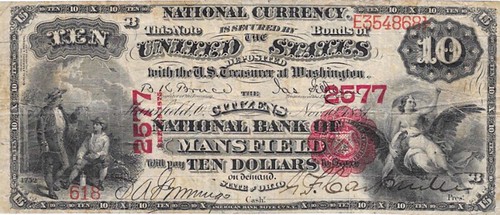 If there is anything that could confirm evidence of the stature of our town, with almost mythic American legitimacy, it would be seeing our name printed prominently on the face of Federal crisp green bills. There it is, on one supremely sanctioned official unit of legal tender, like a sacred seal: Mansfield, Ohio next to an iconic President, with liberty and justice for all. Nothing confers validity like money; our confirmation that the United States mint recognizes Mansfield, Ohio. Here are some bills—a whole wallet full—that offer proof our hometown has achieved the gold standard of authenticity in American history. Cash in the wilderness The US Government was not yet in the business of minting paper money, so everything Federally sanctioned was in the form of hard coin. A local grocer in 1818 advertised that the store would sell their goods “for cash, or bear skins, deer skins, venison hams, and furs.” But any town that wanted to show up on the map needed a bank, so in 1816 eager entrepreneurs cobbled together the Richland & Huron Bank of Mansfield. They printed lovely paper currency before the State Legislature even confirmed their charter; and when the State refused to recognize them they went ahead and opened for business anyway. Mansfield’s first financial institution was a wildcat bank. Only three months after their grand opening, their wagon had rolled into the deep mud with dozens of law suits; within a year it was completely swamped under hundreds of thorny litigations. Five years later, all of the bank officers had lost their shirts, their lands, their credibility. These beautiful bills were not ‘worth the paper they were printed on’ for very long. 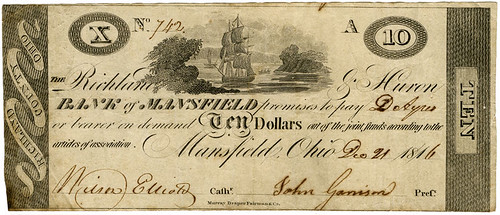 OK, we know these weren't "minted" by the U.S. Mint. But it's a decent article regardless of the numismatic snafus. More local publications should run articles
like these, and I would very much encourage both local coin clubs and national specialty organizations to cultivate relations with editors and reporters to assist and encourage them in publishing
such articles. Make the illustrations and suggested text available. Who knows? Maybe an article will inspire some serious new collectors, or flush some great numismatic rarities out of the woodwork.
You'll never know until you try!
Below are some additional illustrations from the article. Be sure to read the complete piece online for more. -Editor 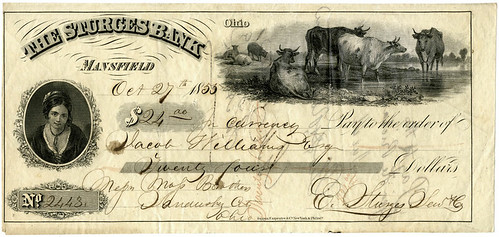 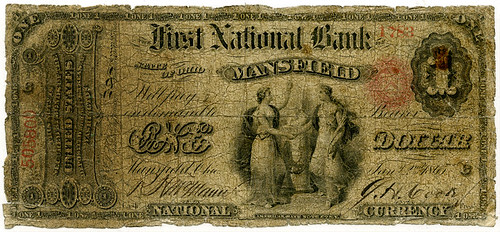 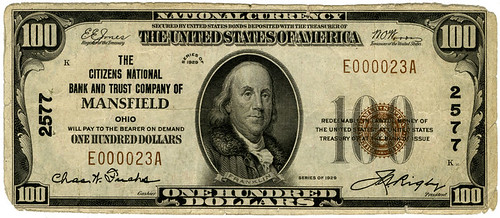 To read the complete article, see: 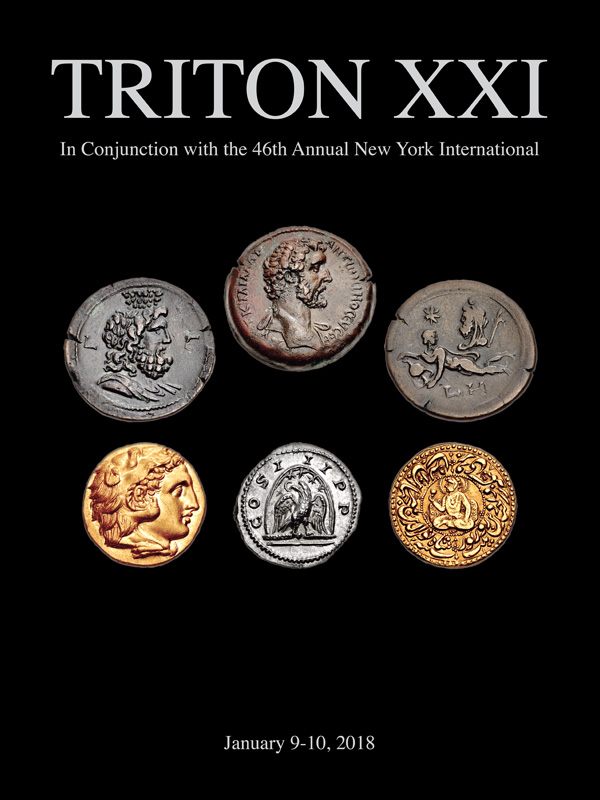 Wayne Homren, Editor The Numismatic Bibliomania Society is a non-profit organization promoting numismatic literature. See our web site at coinbooks.org. To submit items for publication in The E-Sylum, write to the Editor at this address: whomren@gmail.com To subscribe go to: https://my.binhost.com/lists/listinfo/esylum All Rights Reserved. NBS Home Page Contact the NBS webmaster 
|
